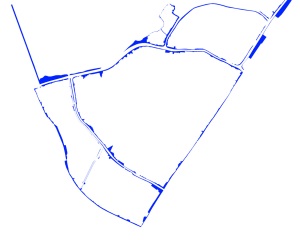From bird’s eye view the wide and impermeable borders that surround Dharavi on all sides are obvious. When zooming into these areas with the help of photographs they no longer seem like the expected voids but like zones of encounter where the formal and the informal use of the city overlap. While the built-up edges of Dharavi’s structures are clear-cut, the use of open spaces between these edges and the physical barriers of the formal infrastructure are more diffused. Despite and because of their conditions, the inhabitants use them flexibly for various temporary activities, similar to the open public spaces inside the settlement, making maximum use of available area mostly related to their livelihoods: herb-gardens, recycling processes, laundry drying etc.
While the centre of a slum is a relatively secure place, often reflected in more solid housing, the edges are vulnerable in terms of safety and possible demolition; the implementation of the DRP would most likely start from here.
For this project I am interested in these zones of encounter as one part of an incremental upgrading scheme for Dharavi. The slivers of land between the outline of Dharavi’s houses and the obstacle of the formal infrastructure will be the place for proposed interventions in order to bridge the gap between Dharavi and Mumbai (spatial, visual, economical and social) and make Dharavi an integrated neighbourhood of the city based on its identity and character. The interventions should give additional space for community and livelihoods, protection, water and light on unoccupied land and impact on the implementation of the DRP through the new interface and by reversing the formal order of development.

